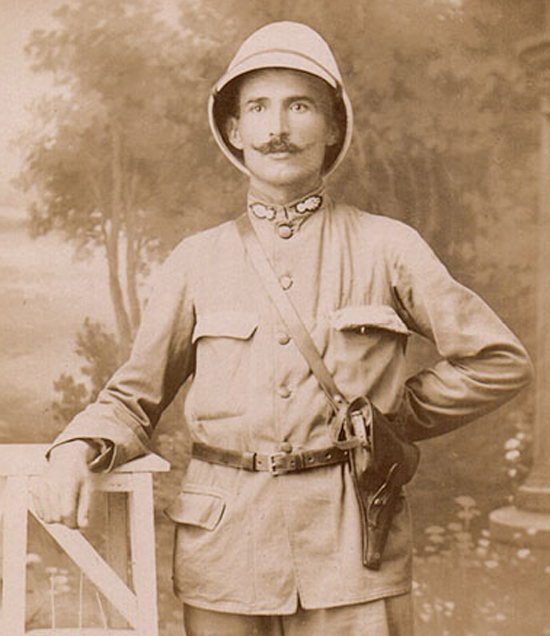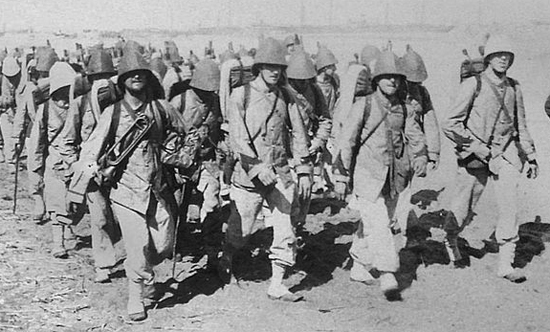
French soldiers in Madagascar – While officers retained the traditional blue tunics, the ranks wore khaki jackets and shirts
While its origins lay in British India, the use of khaki was not limited to the British Army. By the end of the 19th century most of the nations of Europe that had colonies overseas had begun to utilize similar colored “tropical” uniforms. One interesting irony is that in many cases European officers and NCOs were outfitted with their “European” style uniforms, while colonial troops wore the khaki colored ones. Many of these colors were never officially deemed “khaki” but the colors were extremely close in practice.
It was Britain’s traditional enemy – and later its closest ally – that soon adopted khaki throughout its global empire.
Following the downfall of the French Second Empire the nation looked to rebuild its esteem ironically through empire building.
Across Africa and the Pacific the French Foreign Legion and French Marine Infantry were outfitted with a tan-colored corduroy or “moleskin,” which had a brownish color. During the inter-war period the color was lightened and officially became known as khaki, only to be replaced in the post-war era by the olive drab colored uniforms.
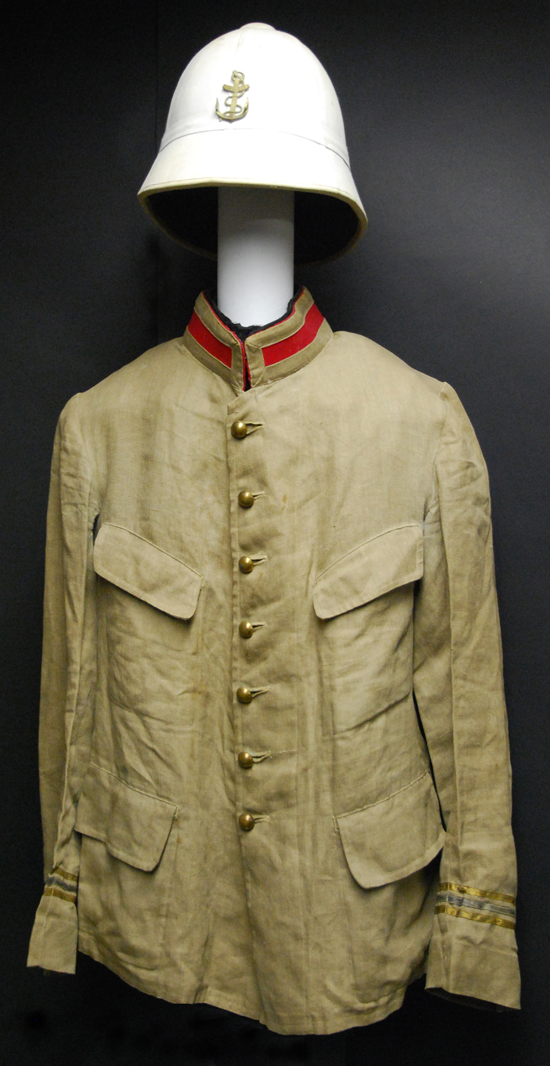
While the French Army in Europe worn the same dark blue jackets that were used during the Franco-Prussian War, in the French colonies khaki was adopted with the M1892 pattern jacket.
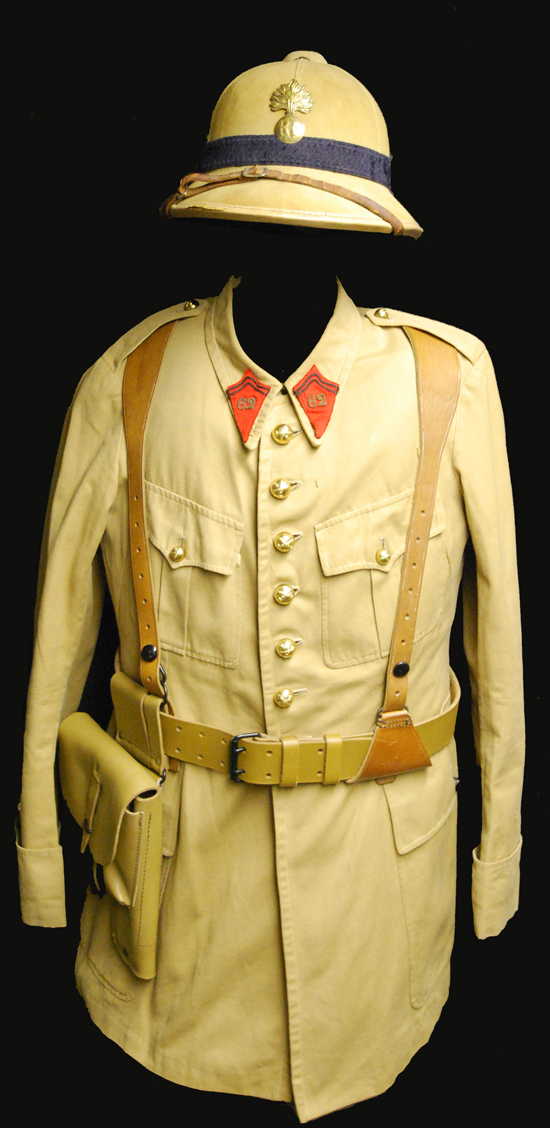
The updated M31 tropical uniform, which was used by the French forces in Africa and the Middle East during World War II.
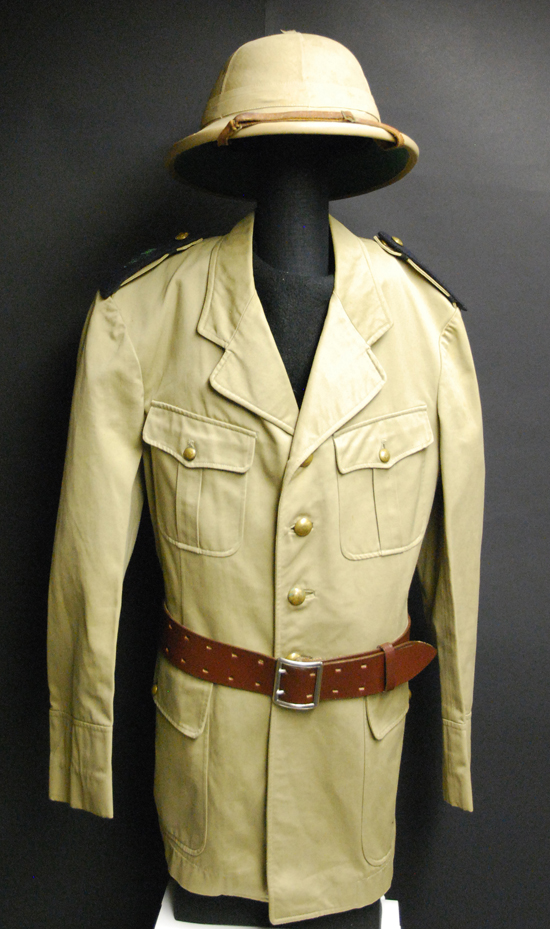
The final tropical pattern French tunic, adopted as the M58 after the debacles in North Africa and French-Indo China. This style of jacket was in use during the sunset of the French colonial empire.

